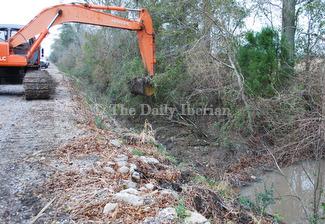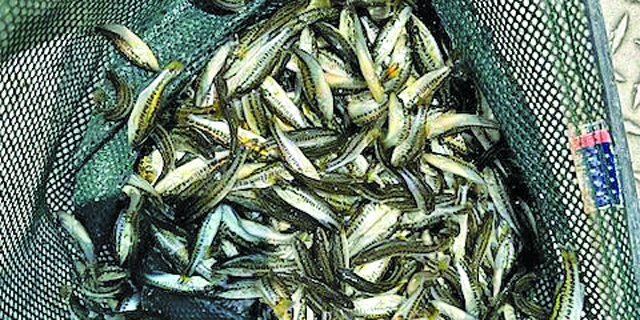Targeting beaver dams
Published 12:00 am Tuesday, January 11, 2011

- A dredge bucket scoops up beaver dam material Monday that blocked water, lower right, in a drainage canal. — Holly Leleux-Thubron / The Daily Iberian
Iberia Parish Public Works crews were out Wednesday to destroy seven identified beaver dams found in drainage canals causing problems with water flow.
It is a constant battle, said Public Works Director Kevin Hagerich, who along with Parish President Ernest Freyou Friday identified another dam that needs attention off of U.S. 90.
Trending
‘It’s a very serious problem for us,” Hagerich said. “They’re good engineers. They eat well around here and don’t have to fight for survival so they appear to be flourishing.”
Assistant Public Works Director Terry Bourque said the animals have been found in drainage channels located near ponds. He said crews have been destroying dams for months only to find the beavers have rebuilt them in a matter of days.
The department enlisted the help of a trapper late last year in hopes of alleviating the problem, Hagerich said. Iberia Parish resident trapper Lynn Rogers trapped 11 beavers in one week in a drainage channel off Blanchard Road. To date, Hagerich said, several dozen beavers have been captured.
The crew, armed with an excavator, cleared away beaver dams off of Emile Verret Road, Blanchard Road and Ozenne Rad Monday.
Hagerich also said the local beaver species here appears to be super sized, weighing in around 75 pounds compared to their 35 pound counterparts further north.
Contrary to what was previously reported by Hagerich, it’s a misconception that beavers are not native to the area, said New York-based biologist Sharon Brown, who works for the nonprofit Beavers: Wetlands and Wildlife.
Trending
She said the species was identified by early explorers in all parts of North America, including Louisiana. The state is always included in scientific discussions of beavers and their habitat.
Brown also said that trapping beavers, in her opinion and as studies have shown, isn’t the most effective strategy in dealing with their potential debilitating effects on a community’s drainage system.
“Studies have shown that in areas where beavers are being trapped, their population is the same in a matter of two years time despite the trapping efforts,” Brown said.
Brown said modern devices such as “beaver deceivers” and semi-circular fences placed around culverts are cost-effective and have proven effective in curtailing dam building in the middle of a drainage channel.
More information on the alternatives is available on the nonprofit’s Web site www.beaversWW.com.
“Trapping is the basic, traditional method,” Brown said.
“We didn’t know the very best methods even 10 years ago. Now we have some really good methods close to 100 percent effective and inexpensive. Trapping programs are real expensive and there are alternatives out there that could be a win-win for communities.”
Until a better method is identified by the parish Public Works Department, it appears likely Rogers could be kept busy as its crews continue dealing with the problem.





